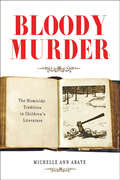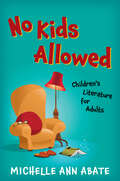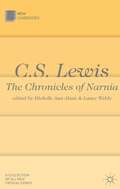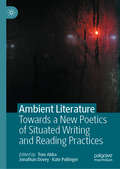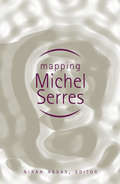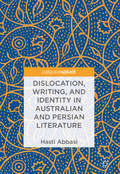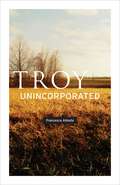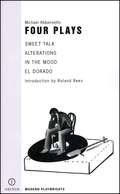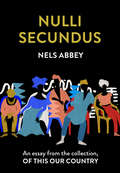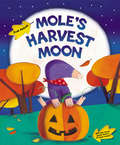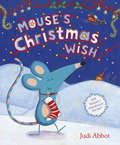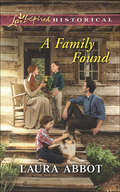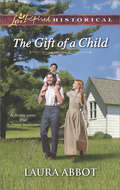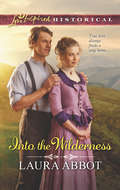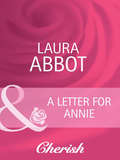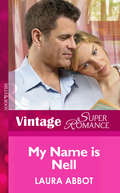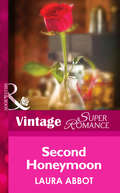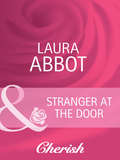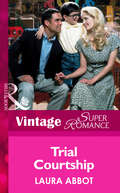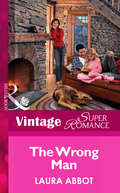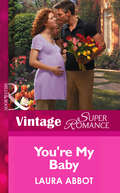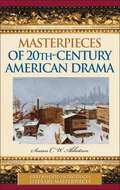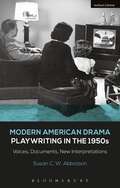- Table View
- List View
Bloody Murder: The Homicide Tradition in Children's Literature
by Michelle Ann AbateGiven the long-standing belief that children ought to be shielded from disturbing life events, it is surprising to see how many stories for kids involve killing. Bloody Murder is the first full-length critical study of this pervasive theme of murder in children’s literature. Through rereadings of well-known works, such as Alice’s Adventures in Wonderland, the Nancy Drew Mystery Stories, and The Outsiders, Michelle Ann Abate explores how acts of homicide connect these works with an array of previously unforeseen literary, social, political, and cultural issues. Topics range from changes in the America criminal justice system, the rise of forensic science, and shifting attitudes about crime and punishment to changing cultural conceptions about the nature of evil and the different ways that murder has been popularly presented and socially interpreted. Bloody Murder adds to the body of inquiry into America's ongoing fascination with violent crime. Abate argues that when narratives for children are considered along with other representations of homicide in the United States, they not only provide a more accurate portrait of the range, depth, and variety of crime literature, they also alter existing ideas about the meaning of violence, the emotional appeal of fear, and the cultural construction of death and dying.
No Kids Allowed: Children's Literature for Adults
by Michelle Ann AbateWhat do Adam Mansbach's Go the F**k to Sleep and Barbara Park's MA! There's Nothing to Do Here! have in common? These large-format picture books are decidedly intended for parents rather than children. In No Kids Allowed, Michelle Ann Abate examines a constellation of books that form a paradoxical new genre: children's literature for adults. Distinguishing these books from YA and middle-grade fiction that appeals to adult readers, Abate argues that there is something unique about this phenomenon. Principally defined by its form and audience, children's literature, Abate demonstrates, engages with more than mere nostalgia when recast for grown-up readers. Abate examines how board books, coloring books, bedtime stories, and series detective fiction written and published specifically for adults question the boundaries of genre and challenge the assumption that adulthood and childhood are mutually exclusive.
C.S. Lewis (New Casebooks)
by Michelle Ann Abate Lance WeldyBeginning with the publication of The Lion, the Witch and the Wardrobe in 1950 and concluding with the appearance of The Last Battle in 1956, C. S. Lewis's seven-book series chronicling the adventures of a group of young people in the fictional land of Narnia has become a worldwide classic of children's literature.This stimulating collection of original essays by critics in a wide range of disciplines explores the past place, present status, and future importance of The Chronicles of Narnia. With essays ranging in focus from textual analysis to film and new media adaptations, to implications of war/trauma and race and gender, this cutting-edge New Casebook encourages readers to think about this much-loved series in fresh and exciting ways.
Ambient Literature: Towards a New Poetics of Situated Writing and Reading Practices
by Tom Abba Jonathan Dovey Kate PullingerThis book considers how a combination of place-based writing and location responsive technologies produce new kinds of literary experiences. Building on the work done in the Ambient Literature Project (2016–2018), this books argues that these encounters constitute new literary forms, in which the authored text lies at the heart of an embodied and mediated experience. The visual, sonic, social and historic resources of place become the elements of a live and emergent mise-en-scène. Specific techniques of narration, including hallucination, memory, history, place based writing, and drama, as well as reworking of traditional storytelling forms combine with the work of app and user experience design, interaction, software authoring, and GIS (geographical information systems) to produce ambient experiences where the user reads a textual and sonic literary space. These experiences are temporary, ambiguous, and unpredictable in their meaning but unlike the theatre, the gallery, or the cinema they take place in the everyday shared world. The book explores the potentiality of a new literary form produced by the exchange between location-aware cultural objects, writers and readers. This book, and the work it explores, lays the ground for a new poetics of situated writing and reading practices.
Mapping Michel Serres: Mapping Michel Serres (Studies In Literature And Science)
by Niran Abbas"Provides an extremely valuable introduction to the work of Michel Serres for an English-speaking audience, as well as offering useful critical approaches for those already familiar with its outlines." ---Robert Harrison, Stanford University [blurb from review pending permission] The work of Michel Serres---including the books Hermes, The Parasite, The Natural Contract, Genesis, The Troubadour of Knowledge, and Conversations on Science, Culture, and Time---has stimulated readers for years, as it challenges the boundaries of science, literature, culture, language, and epistemology. The essays in Mapping Michel Serres, written by the leading interpreters of his work, offer perspectives from a range of disciplinary positions, including literature, language studies, and cultural theory. Contributors include Maria Assad, Hanjo Berressem, Stephen Clucas, Steven Connor, Andrew Gibson, René Girard, Paul Harris, Marcel Hé naff, William Johnsen, William Paulson, Marjorie Perloff, Philipp Schweighauser, Isabella Winkler, and Julian Yates.
Dislocation, Writing, and Identity in Australian and Persian Literature
by Hasti AbbasiThis study aims to foreground key literary works in Persian and Australian culture that deal with the representation of exile and dislocation. Through cultural and literary analysis, Dislocation, Writing, and Identity in Australian and Persian Literature investigates the influence of dislocation on self-perception and the remaking of connections both through the act of writing and the attempt to transcend social conventions. Examining writing and identity in David Malouf’s An Imaginary Life (1978), Iranian Diaspora Literature, and Shahrnush Parsipur’s Women Without Men (1989/ Eng.1998), Hasti Abbasi provides a literary analysis of dislocation, with its social and psychological manifestations. Abbasi reveals how the exploration of exile/dislocation, as a narrative that needs to be investigated through imagination and meditation, provides a mechanism for creative writing practice.
Troy, Unincorporated (Phoenix Poets)
by Francesca AbbateA meditation on the nature of betrayal, the constraints of identity, and the power of narrative, the lyric monologues in Troy, Unincorporated offer a retelling, or refraction, of Chaucer’s tragedy Troilus and Criseyde. The tale’s unrooted characters now find themselves adrift in the industrialized farmlands, strip malls, and half-tenanted “historic” downtowns of south-central Wisconsin, including the real, and literally unincorporated, town of Troy. Allusive and often humorous, they retain an affinity with Chaucer, especially in terms of their roles: Troilus, the good courtly lover, suffers from the weeps, or, in more modern terms, depression. Pandarus, the hard-working catalyst who brings the lovers together in Chaucer’s poem, is here a car mechanic. Chaucer’s narrator tells a story he didn’t author, claiming no power to change the course of events, and the narrator and characters in Troy, Unincorporated struggle against a similar predicament. Aware of themselves as literary constructs, they are paradoxically driven by the desire to be autonomous creatures—tale tellers rather than tales told. Thus, though Troy, Unincorporated follows Chaucer’s plot—Criseyde falls in love with Diomedes after leaving Troy to live with her father, who has broken his hip, and Troilus dies of a drug overdose—it moves beyond Troilus’s death to posit a possible fate for Criseyde on this “litel spot of erthe.”
Troy, Unincorporated (Phoenix Poets)
by Francesca AbbateA meditation on the nature of betrayal, the constraints of identity, and the power of narrative, the lyric monologues in Troy, Unincorporated offer a retelling, or refraction, of Chaucer’s tragedy Troilus and Criseyde. The tale’s unrooted characters now find themselves adrift in the industrialized farmlands, strip malls, and half-tenanted “historic” downtowns of south-central Wisconsin, including the real, and literally unincorporated, town of Troy. Allusive and often humorous, they retain an affinity with Chaucer, especially in terms of their roles: Troilus, the good courtly lover, suffers from the weeps, or, in more modern terms, depression. Pandarus, the hard-working catalyst who brings the lovers together in Chaucer’s poem, is here a car mechanic. Chaucer’s narrator tells a story he didn’t author, claiming no power to change the course of events, and the narrator and characters in Troy, Unincorporated struggle against a similar predicament. Aware of themselves as literary constructs, they are paradoxically driven by the desire to be autonomous creatures—tale tellers rather than tales told. Thus, though Troy, Unincorporated follows Chaucer’s plot—Criseyde falls in love with Diomedes after leaving Troy to live with her father, who has broken his hip, and Troilus dies of a drug overdose—it moves beyond Troilus’s death to posit a possible fate for Criseyde on this “litel spot of erthe.”
Michael Abbensetts: Four Plays (Oberon Modern Playwrights)
by Michael AbbensettsFeatures the plays Sweet talk, Alterations, In the Mood and El DoradoMichael Abbensetts is the writer who gave Caribbeans a real voice in Britain.Sweet talk is a witty, energetic and finally moving account of a marriage in crisis.Alterations is a comedy set in a tailor's shop, inspired by a real visit to a small room off Carnaby Street where two black tailors had set up shop with just two sewing machines and an ironing board.In the Mood focuses on two Caribbean Second World War veterans, whose nostalgic Remembrance Sunday lunch is disrupted by a visit from their frivolour and irritating friend, in search of a loan and as many free drinks as he can get his hands on.El Dorado turns its attention to a mixed-race, middle class family interred in their formerly grand but now dilapidated house. A grandson returns home to lay some ghosts to bed, and gains an alarming insight into the truths of home life.
Nulli Secundus: An Essay From The Collection, Of This Our Country
by Nels AbbeyTo define Nigeria is to tell a half-truth. Many have tried, but most have concluded that it is impossible to capture the true scope and significance of Africa’s most populous nation through words or images.
Mole's Harvest Moon
by Judi AbbotBear, Mouse and Rabbit are foraging for ingredients for Mole's harvest feast. But as darkness falls they realise they are being followed! Only the light of the harvest moon and their own cunning will get them home - but on this spooky autumn night is everything as it seems?A lovely reassuring autumnal tale about appearances, food and friendship.
Mouse's Christmas Wish
by Judi AbbotThis year, Rabbit has invited all her friends to spend Christmas with her. Mouse is the most excited of all: it's his dearest wish to spend the holiday together with his friends. But one thing after another goes wrong until Mouse believes he will never be able to make the journey! Will he be left all alone at Christmas?
A Family Found: Wagon Train Sweetheart Second Chance Hero Love By Design A Family Found (Mills And Boon Love Inspired Historical Ser.)
by Laura AbbotA Mother for His Sons
The Gift of a Child: His Most Suitable Bride Cowboy To The Rescue The Gift Of A Child A Home For Her Heart (Mills And Boon Love Inspired Historical Ser.)
by Laura AbbotA FAMILY ALL HER OWN
Into the Wilderness (Mills And Boon Love Inspired Historical Ser.)
by Laura AbbotHe survived a battlefield massacre and, before that, his fiancée’s betrayal.
A Letter for Annie (Going Back #19)
by Laura AbbotThe last time Annie Greer saw Eden Bay was in her rearview mirror. And she'd keep it that way if not for the SOS from the only family she has. While she may have come home, she has no intention of reconnecting with the town that thinks the worst of her. Too bad fate has different plans–namely Kyle Becker.
My Name is Nell (Hometown U.S.A. #6)
by Laura AbbotBrady Logan never expected to find Nell Porter when he left California. He didn't even know he was looking for her.
Second Honeymoon (Mills And Boon Vintage Superromance Ser.)
by Laura Abbot"First comes love, then comes marriage, then comes Meg with a baby carriage." Once upon a time, Meg and Scott Harper had it all. But then life got in the way, and they lost sight of what was important. Each other.
Stranger at the Door (Everlasting Love #9)
by Laura AbbotFor Isabel and Sam Lambert it was love at first sight.
Trial Courtship (Mills And Boon Vintage Superromance Ser. #Bk. 843)
by Laura AbbotIt isn't easy being a kid. Life's a trial for nine-year-old Nick Porter. His grandfather wants him to be good at sports, but he's hopeless. His grandmother wants him to eat vegetables, but he hates them. His aunt Andrea–who's his guardian–is nice, but she's always on him about school and manners and stuff.
The Wrong Man (Single Father #3)
by Laura AbbotBeing married to the wrong man can lead only to divorce It was a hard lesson, but Libby Cameron learned it. Twelve years later, her ex-husband has moved to town. Libby's too smart to go down that road again. But doing the smart thing isn't easy once she discovers that Trent is fathering a sweet and sad little girl all by himself.
You're My Baby (9 Months Later Ser. #1059)
by Laura AbbotThere's one test that a single woman doesn't want to come out positive For Pam Carver, trouble comes in the form of a home pregnancy kit. She wants her baby, but with the father completely out of the picture, she's all on her own. Then her friend and colleague Grant Gilbert makes her an incredible offer. Marriage for one year.
Masterpieces of 20th-Century American Drama (Greenwood Introduces Literary Masterpieces)
by Susan C. AbbotsonAmerican playwrights have made enormous contributions to world drama during the last century, and their works are widely read and performed. This reference conveniently introduces 10 of the most important modern American plays read by students. An introductory essay concisely overviews modern American drama, and each of the chapters that follow examines a particular play. Among the plays discussed are Thornton Wilder's Our Town, Arthur Miller's Death of a Salesman, Lorraine Hansberry's A Raisin in the Sun, and August Wilson's The Piano Lesson. Each chapter includes a biography, a plot summary, an analysis of the play's themes, characters, and dramatic art, and a review of its historical background and reception. Chapters list works for further reading, and the volume closes with a selected, general bibliography.
Modern American Drama: Voices, Documents, New Interpretations (Decades of Modern American Drama: Playwriting from the 1930s to 2009)
by Susan C. AbbotsonThe Decades of Modern American Drama series provides a comprehensive survey and study of the theatre produced in each decade from the 1930s to 2009 in eight volumes. Each volume equips readers with a detailed understanding of the context from which work emerged: an introduction considers life in the decade with a focus on domestic life and conditions, social changes, culture, media, technology, industry and political events; while a chapter on the theatre of the decade offers a wide-ranging and thorough survey of theatres, companies, dramatists, new movements and developments in response to the economic and political conditions of the day. The work of the four most prominent playwrights from the decade receives in-depth analysis and re-evaluation by a team of experts, together with commentary on their subsequent work and legacy. A final section brings together original documents such as interviews with the playwrights and with directors, drafts of play scenes, and other previously unpublished material.The major writers and their works to receive in-depth coverage in this volume include:* William Inge: Picnic (1953), Bus Stop (1955) and The Dark at the Top of the Stairs (1957);* Stephen Sondheim, Arthur Laurents and Jerome Robbins: West Side Story (1957) and Gypsy (1959); * Alice Childress: Just a Little Simple (1950), Gold Through the Trees (1952) and Trouble in Mind (1955);* Jerome Lawrence and Robert Lee: Inherit the Wind (1955), Auntie Mame (1956) and The Gang's All Here (1959).
Modern American Drama: Voices, Documents, New Interpretations (Decades of Modern American Drama: Playwriting from the 1930s to 2009)
by Susan C. AbbotsonThe Decades of Modern American Drama series provides a comprehensive survey and study of the theatre produced in each decade from the 1930s to 2009 in eight volumes. Each volume equips readers with a detailed understanding of the context from which work emerged: an introduction considers life in the decade with a focus on domestic life and conditions, social changes, culture, media, technology, industry and political events; while a chapter on the theatre of the decade offers a wide-ranging and thorough survey of theatres, companies, dramatists, new movements and developments in response to the economic and political conditions of the day. The work of the four most prominent playwrights from the decade receives in-depth analysis and re-evaluation by a team of experts, together with commentary on their subsequent work and legacy. A final section brings together original documents such as interviews with the playwrights and with directors, drafts of play scenes, and other previously unpublished material.The major writers and their works to receive in-depth coverage in this volume include:* William Inge: Picnic (1953), Bus Stop (1955) and The Dark at the Top of the Stairs (1957);* Stephen Sondheim, Arthur Laurents and Jerome Robbins: West Side Story (1957) and Gypsy (1959); * Alice Childress: Just a Little Simple (1950), Gold Through the Trees (1952) and Trouble in Mind (1955);* Jerome Lawrence and Robert Lee: Inherit the Wind (1955), Auntie Mame (1956) and The Gang's All Here (1959).
